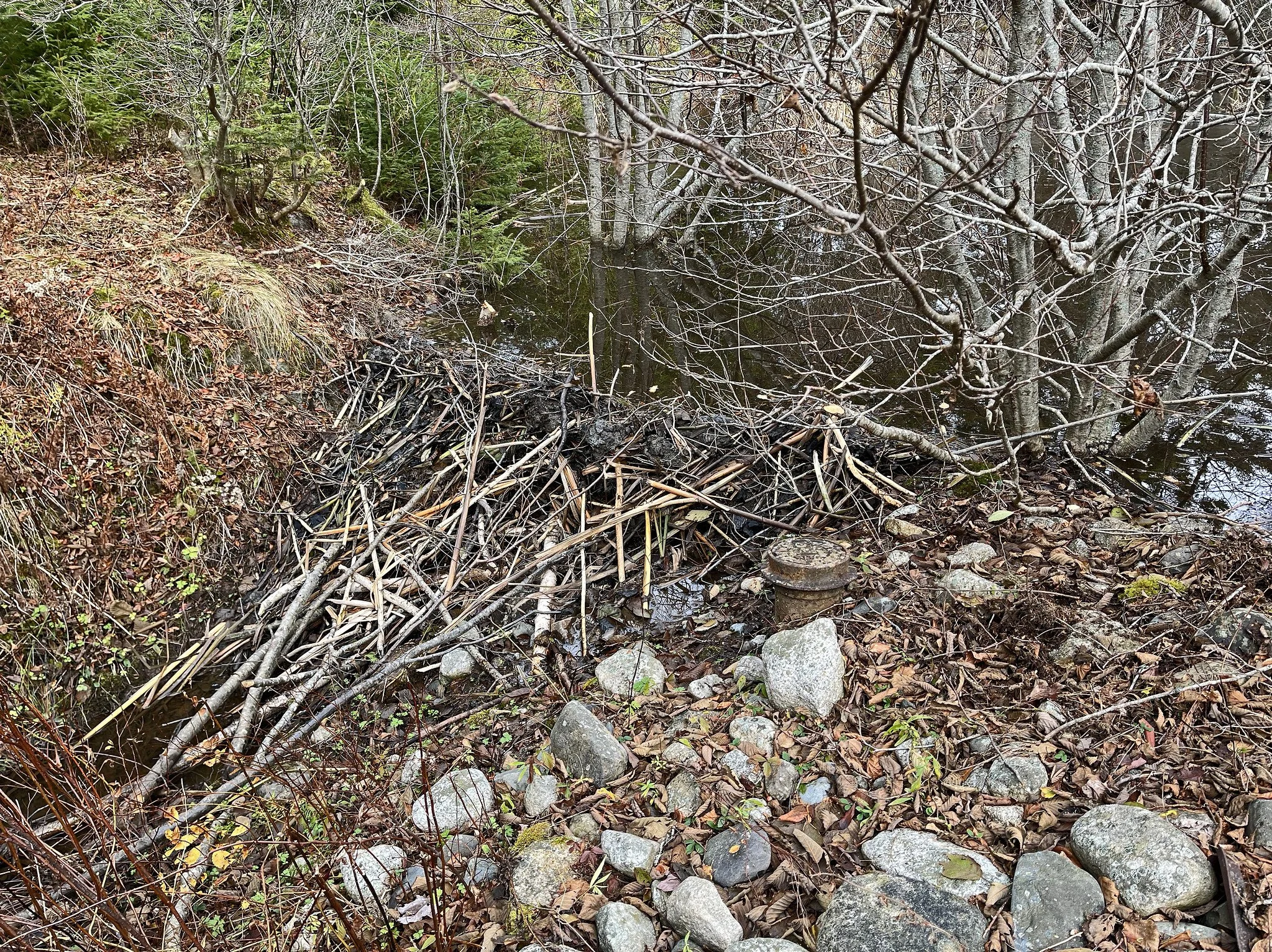I’m still not sure whether living with claim-jumping American beavers is a privileged educational opportunity or a deserved penance for my many sins. Time will tell. So far, there have been no damaging floods and no special trees toppled. Our fingers are crossed.
Above is an image taken yesterday of the pond that Bernie and Bernice have claimed for their home, since Bernie staked it out in late September. Ice is forming there now from the cold and the water level is lowering due to lack of rain or snow. Yet, our honeymooners continue to spend their nights joyously gnawing down bushes and tree trunks and piling them on the water and ice in a seemingly haphazard manner to create a lodge for themselves and their eventual family.
The result so far is that B&B have made a mess and are making it a bigger mess nightly. Below is another image taken yesterday of the largest of the three dams made by the beavers; they all leak:
One of the surprises of this experience (and a little research) has been to see how sloppy and imprecise beavers can be in constructing dams and permanent homes. Most birds are much neater in making even temporary homes.
Of course, beavers can’t fly (thankfully!) and they undergo threats of home invasions here from bobcats, coyotes, and bears (and lynx, cougars, and wolves in other beaver territories). Strong and jagged homes that are accessible from under water are better for beavers than intricately woven and beautiful nests high above.
Beavers also are specially-equipped for building homes in wintery waters. Their fur coats are two-layered and extraordinarily dense, making them warm, waterproof, and luxurious. Their outer guard hairs are coarse and come together to repel water, while the thick, oily underfur is soft and contains tiny barbs that help the “hair” strands interlock. Take a look at the protective thickmess of Bernie’s coat after surfacing out of the water :
(Images taken in Brooklin, Maine, on November 22 and October 22, 2025.)


